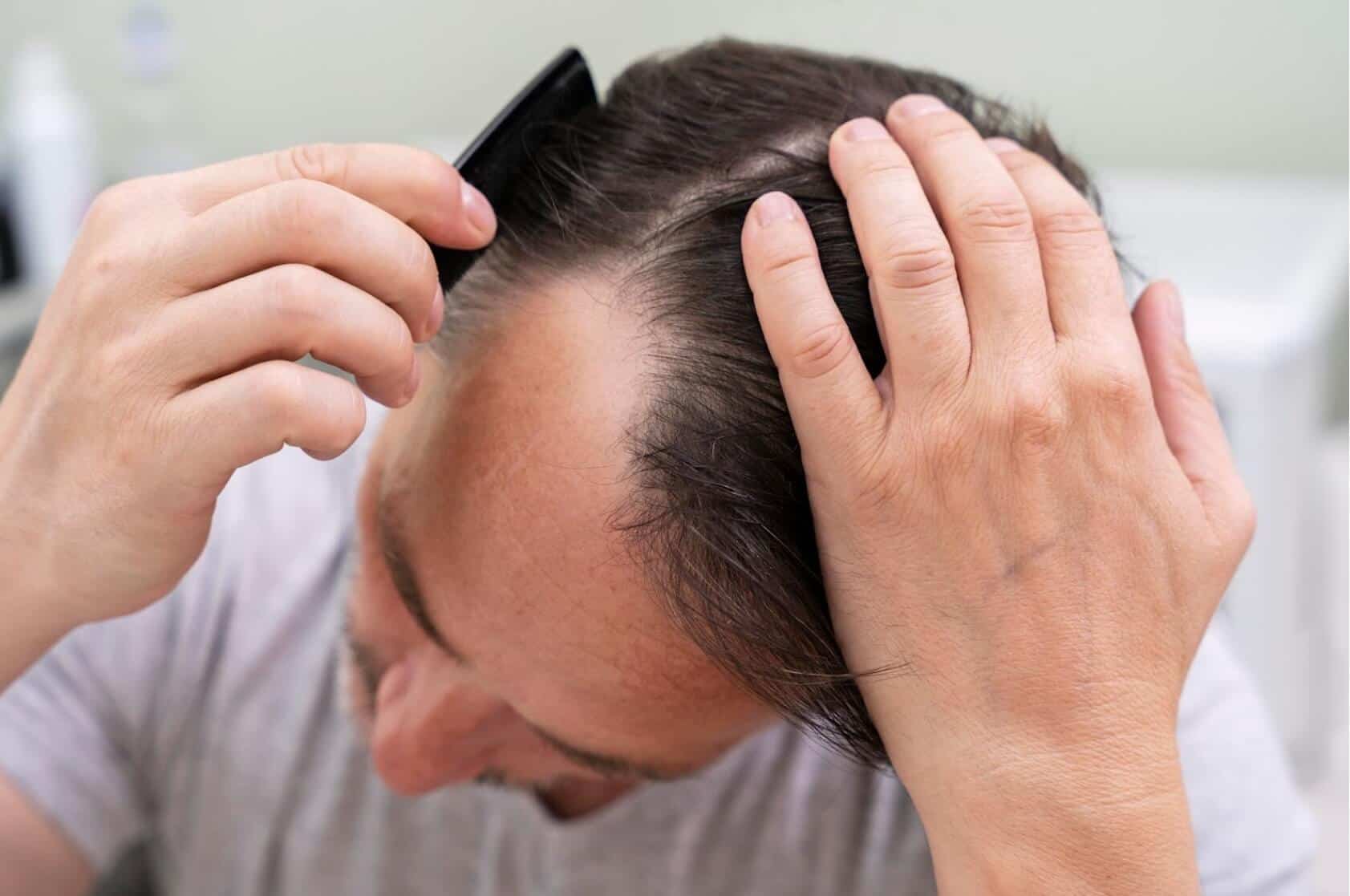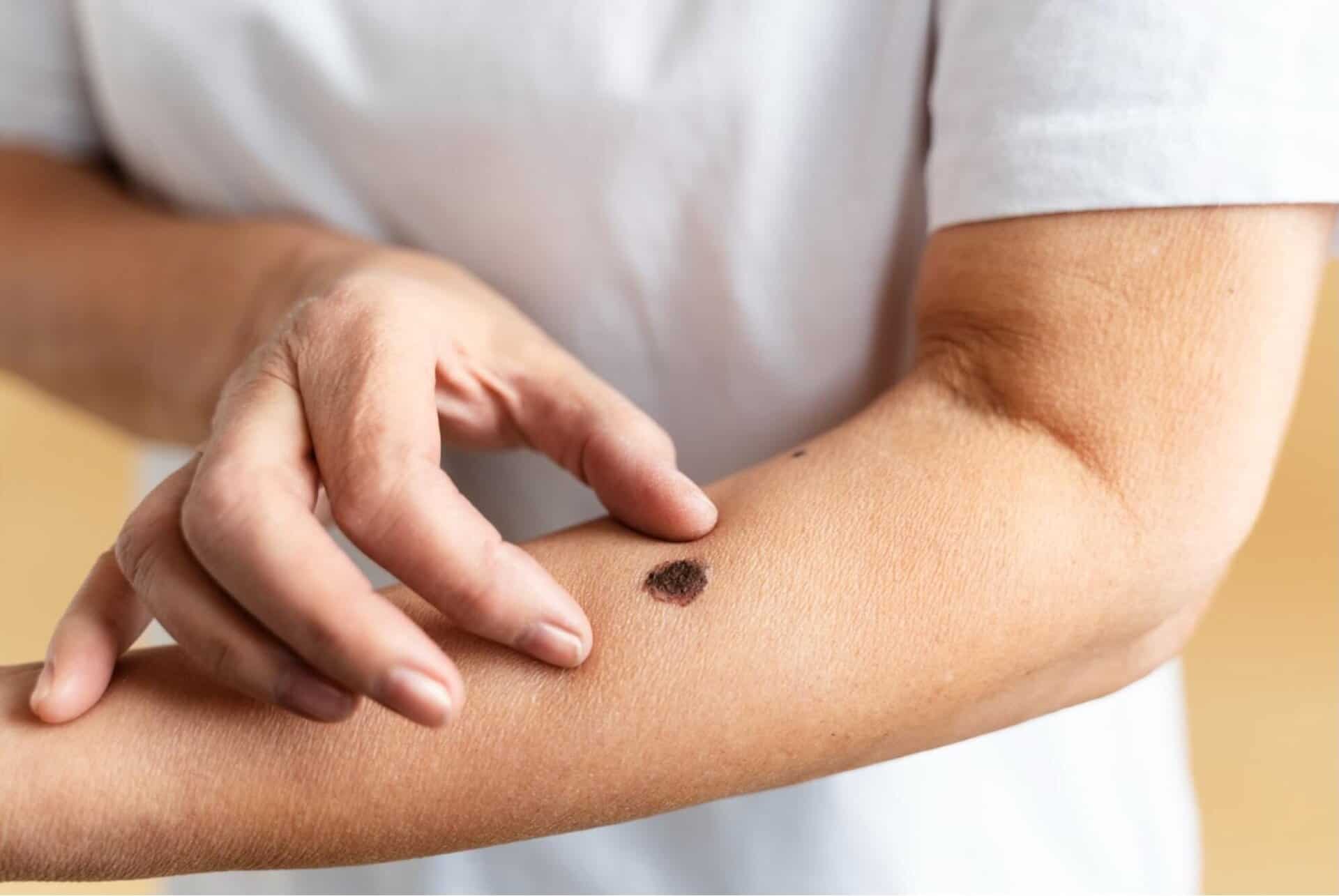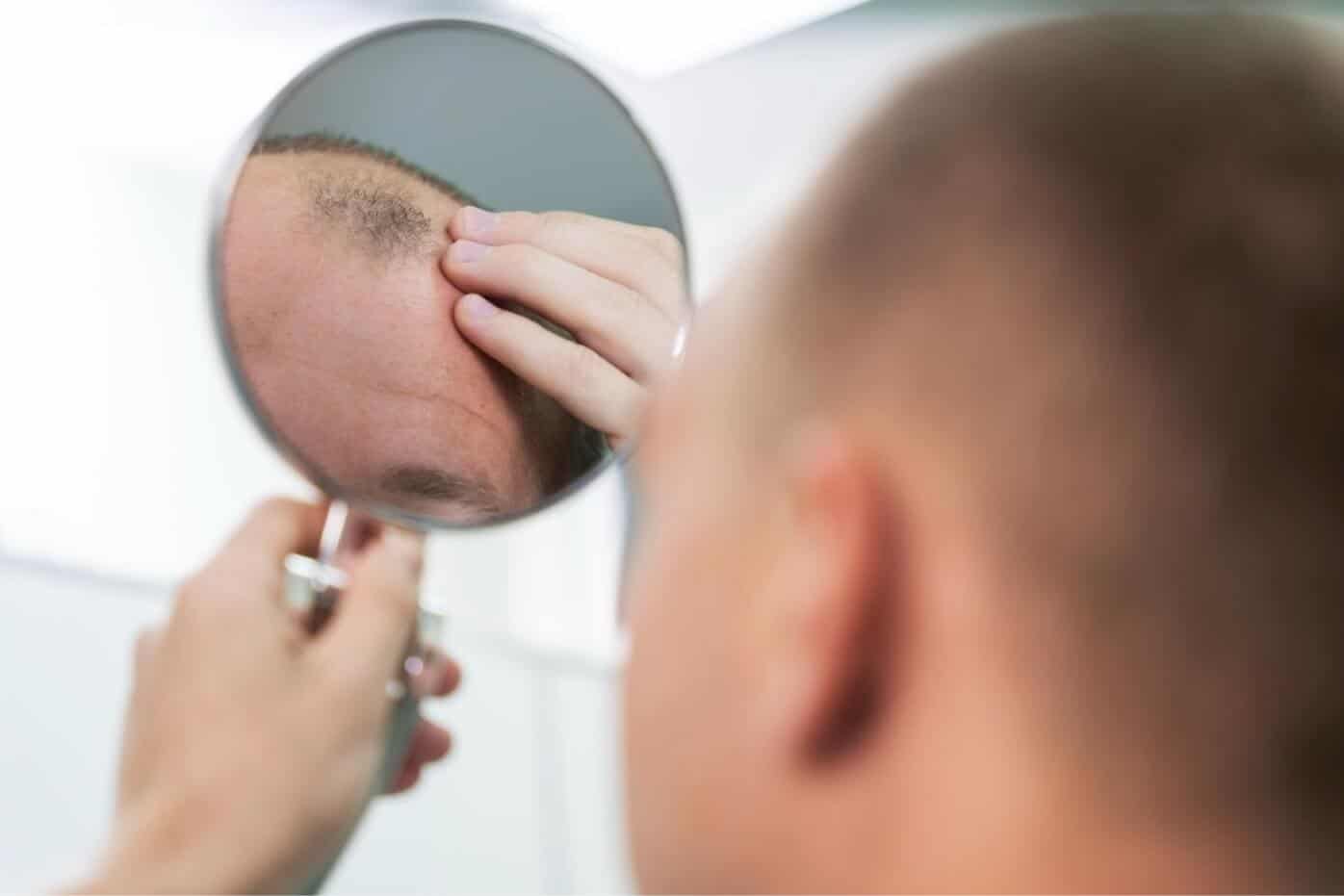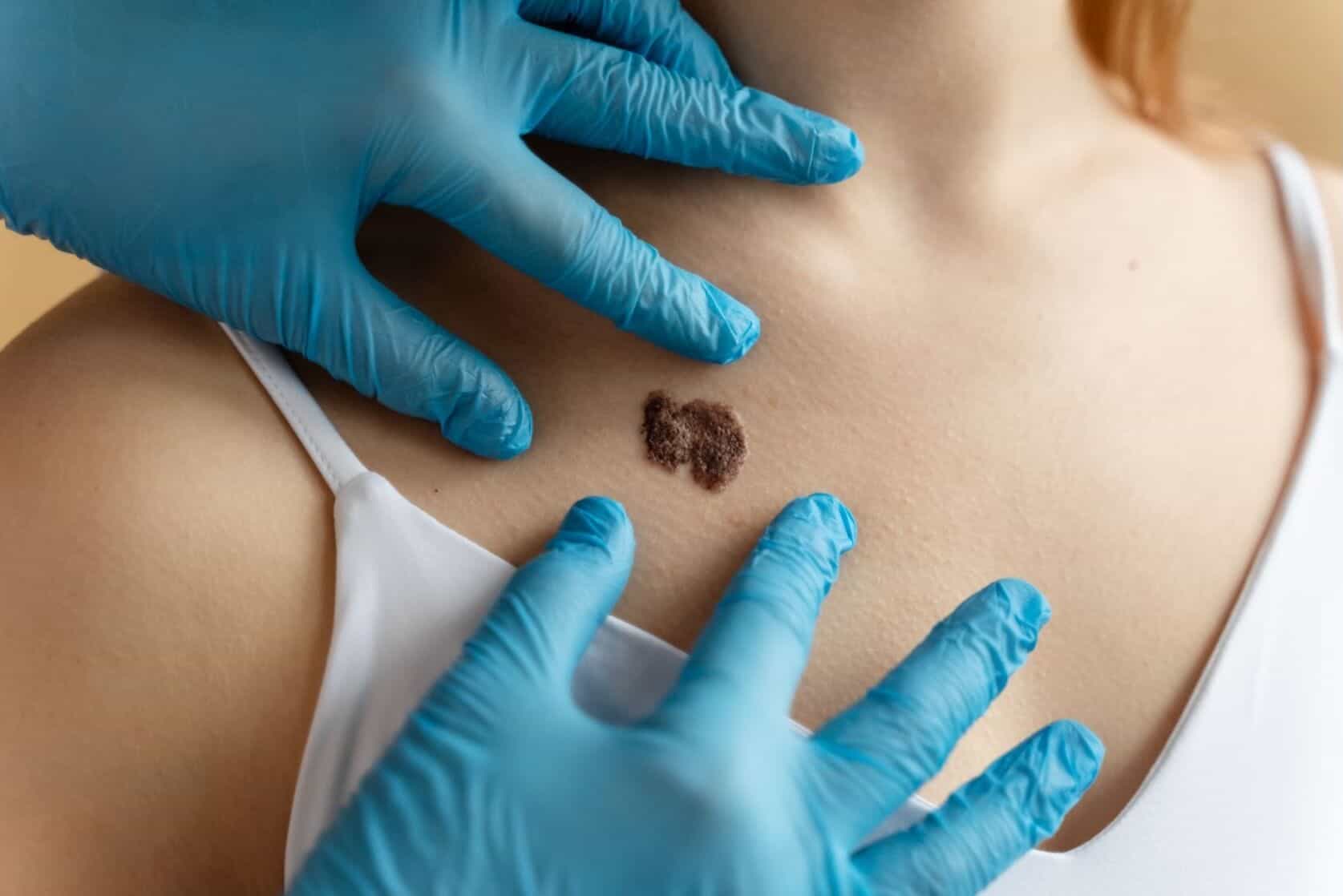Losing 50-100 hairs daily is normal shedding. However, if you experience visible thinning, bald patches, or consistently lose more than 100 hairs daily for over 2-3 months, it might indicate hair loss requiring professional evaluation.
- Dr Suhail Alam
- Reading Time: 10 Mins
Finding hair on your brush, pillow, or shower drain can be alarming. You might wonder if those lost strands are simply part of a natural cycle or the beginning of a concerning hair loss condition. The difference matters, and understanding it can save you unnecessary worry or prompt you to seek timely treatment.
Key Takeaways
- Normal hair shedding (50-100 hairs daily) is part of your hair’s natural growth cycle, while true hair loss involves increased shedding without replacement.
- Factors like genetics, hormones, stress, medications, and nutritional deficiencies can trigger hair loss beyond normal shedding patterns.
- Early intervention is crucial; seek professional help if excessive shedding persists for more than 2-3 months or if you notice visible thinning or bald patches.
Table of Contents
What is Normal Hair Shedding?
Hair shedding is a completely natural part of your hair’s growth cycle. Research shows that most people shed between 50-100 hairs every day as part of this normal process. According to a study published by the National Centre for Biotechnology Information, healthy individuals typically lose fewer than 100 hairs daily.
Your hair continuously cycles through four distinct phases: anagen (growing phase), catagen (transition phase), telogen (resting phase), and exogen (shedding phase). At any given time, about 90-95% of your hair follicles are in the growing phase, while 5-10% are in the resting or shedding phases.
The hair growth cycle operates on its own timeline for each follicle. This asynchronous cycling explains why we don’t lose all our hair at once but rather shed a small amount continuously.
Several factors can influence your normal shedding patterns:
| Factor | How It Affects Shedding |
|---|---|
| Season | Studies show increased shedding in autumn months |
| Hair length | Longer hair appears more noticeable when shed |
| Washing frequency | More hairs release during washing after skipping days |
| Age | Shedding patterns may change with age |
| Hormonal fluctuations | Normal monthly variations, especially in women |
When Hair Shedding Becomes Hair Loss
Normal shedding transforms into concerning hair loss when the rate of shedding significantly increases or new hairs stop replacing the ones you’ve lost.
The key difference is permanence. Normal shedding is temporary and part of a healthy cycle, while hair loss indicates disruption in that cycle.
According to research using the Hair Shedding Visual Scale, healthy individuals typically score between 1-4 (less than 100 hairs daily), while those with true hair loss conditions score 5-9, indicating excessive shedding.
Signs your shedding might be more serious include:
- Noticeably thinner hair when styling
- Visible scalp areas that were previously covered
- Hair loss in patches rather than evenly distributed
- Receding hairline or widening part
- Excessive hair on pillows, clothing, or in drains
Common Causes of Hair Loss
Understanding what’s causing your hair loss is essential for proper treatment. Here are the most common culprits:
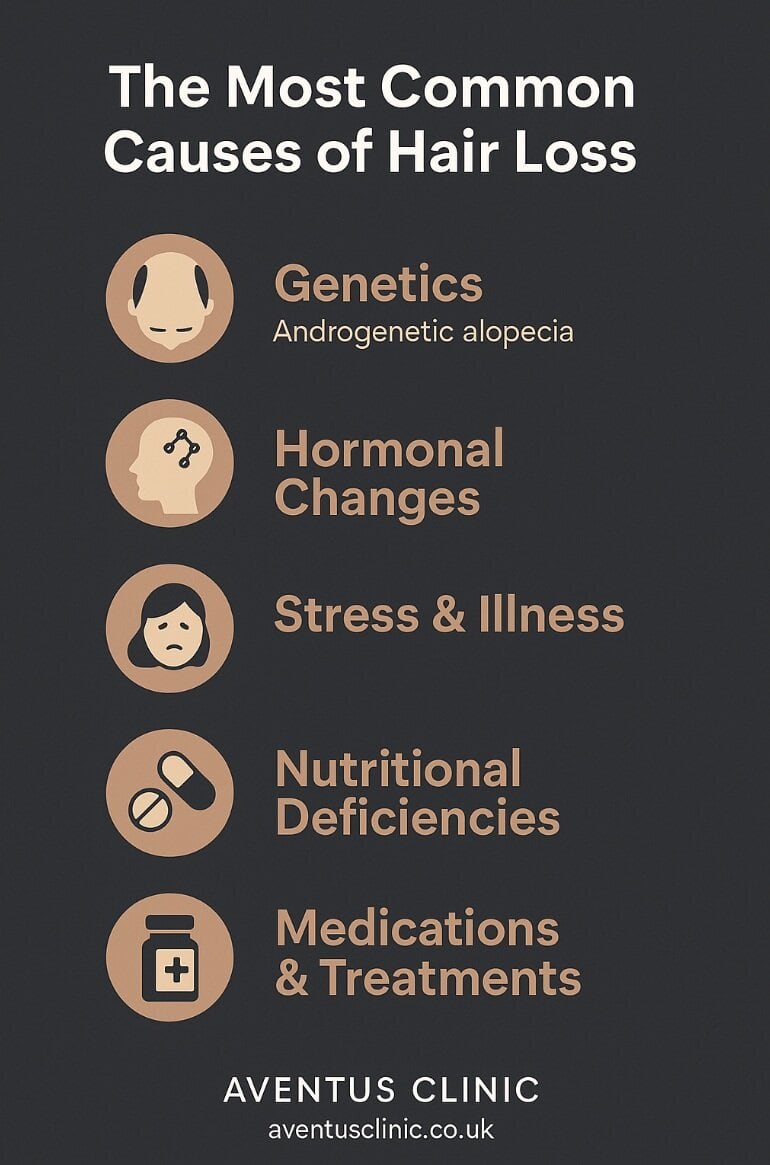
Genetic factors remain the leading cause of pattern hair loss (androgenetic alopecia), affecting both men and women. This condition causes progressive thinning in predictable patterns, typically at the crown and temples for men, and diffuse thinning with preservation of the frontal hairline for women.
Hormonal changes significantly impact hair growth. Pregnancy, childbirth, menopause, and thyroid disorders can all trigger hair shedding or loss. During pregnancy, elevated estrogen levels keep more hairs in the growth phase, but after delivery, these hairs simultaneously enter the shedding phase, causing temporary increased shedding.
Stress, both physical and emotional, can push hair follicles into a premature resting phase. A 2021 NIH study demonstrated how stress hormones directly impact hair follicle stem cells, confirming the stress-hair loss connection that many have experienced.
Medical conditions and medications frequently cause hair loss as a side effect. Conditions like alopecia areata (an autoimmune disorder), scalp infections, and certain systemic illnesses can all affect hair growth. Medications for cancer, arthritis, depression, heart problems, and high blood pressure are known to cause hair loss in some patients.
Nutritional deficiencies can also lead to hair loss. Iron, protein, and vitamin D are particularly important for hair health, as confirmed by multiple clinical studies. A 2021 review found a clear relationship between vitamin D levels and hair loss conditions.
| Treatment Area | Typical Graft Range | Density (grafts/cm²) |
|---|---|---|
| Hairline | 800–1,500 | 30–35 |
| Temporal Points | 150 per side | 25–30 |
| Mid-Scalp | 800–1,600 | 35–45 |
| Crown | 1,000–2,500 | 30–40 |
| Full Scalp | 3,000–6,000+ | Varies by zone |
How to Tell the Difference Between Normal Shedding and Hair Loss
Telling the difference between normal shedding and concerning hair loss can be challenging. Here are some practical assessment techniques:
At-Home Assessment Methods
- The Pull Test: Gently pull a small section of hair (about 60 strands) between your fingers from scalp to end. Losing fewer than 6 hairs is considered normal, while more suggests excessive shedding.
- Shower Test: Count hairs lost during shampooing. Research shows normal shedding during washing averages about 28 hairs.
- Photo Documentation: Take monthly photos of problem areas in consistent lighting to track changes objectively.
| Normal Shedding | Potential Hair Loss |
|---|---|
| 50–100 hairs daily | Consistently more than 100 hairs daily |
| Even distribution across scalp | Pattern formation (crown, temples, part line) |
| No visible thinning | Visible thinning or bald spots |
| Temporary increase after missed washings | Persistent increase regardless of washing schedule |
| Old hairs replaced by new growth | Lack of regrowth in thinning areas |
One thing to note: Seasonal shedding often increases in autumn, so temporary increases during this time may not indicate a problem.
When to Seek Professional Help

Hair Loss Treatment Options at Aventus Clinic
At Aventus Clinic, we offer comprehensive hair loss treatments tailored to your specific condition and needs. Our approach combines medical expertise with cutting-edge technologies to achieve optimal results.
Our treatment options include medication-based approaches like topical minoxidil and oral finasteride, which have shown significant effectiveness in clinical studies. We also offer advanced therapies such as platelet-rich plasma (PRP) treatments, which harness your body’s natural growth factors to stimulate hair follicles.
For more advanced hair loss, we provide state-of-the-art hair transplantation techniques performed by our experienced specialists. These procedures deliver natural-looking, permanent results for suitable candidates.
Every treatment journey begins with a thorough assessment to determine the cause and extent of your hair loss, ensuring you receive the most appropriate care for your specific situation.
Take Action on Your Hair Health Today
Don’t wait until thinning becomes obvious to others. Early intervention often leads to better outcomes with hair loss treatments. At Aventus Clinic, we offer personalised solutions based on your unique needs and hair loss pattern.
Take the first step toward healthier hair by completing our free online assessment today. Our experts will evaluate your situation and recommend the most effective treatment options for your specific condition.
Frequently Asked Questions
Is it normal to lose hair every time I shower?
Yes, finding hair in the shower is normal. Studies show you lose approximately 28 hairs during washing, though this varies based on hair type and washing frequency.
Can stress or illness cause sudden hair loss?
Absolutely. Telogen effluvium, triggered by stress or illness, can cause noticeable shedding about 2-3 months after the stressful event. This type typically resolves once the trigger is addressed.
Will hair grow back after temporary shedding?
In most cases, yes. Temporary shedding from stress, illness, or nutritional deficiencies typically reverses once the underlying cause is corrected, with regrowth starting within 3-6 months.
How long does stress-related hair loss last?
Stress-induced telogen effluvium usually lasts 6-9 months. With chronic stress, shedding may continue until stress levels are effectively managed.
What nutrients help prevent excessive hair shedding?
Iron, vitamin D, zinc, biotin, and protein are essential for healthy hair growth. Deficiencies in these nutrients can contribute to increased shedding.
Does brushing hair cause more shedding?
Gentle brushing doesn’t increase total hair loss; it simply removes hairs that were already in the shedding phase. However, aggressive brushing can cause breakage.





